Discover top guides, trends, tips and expertise from AIO Writers
Discover the Money-Making Formula for All-of-Funnel (AoFu) Blogging
Julia McCoy
Wednesday, 19th Jul 2023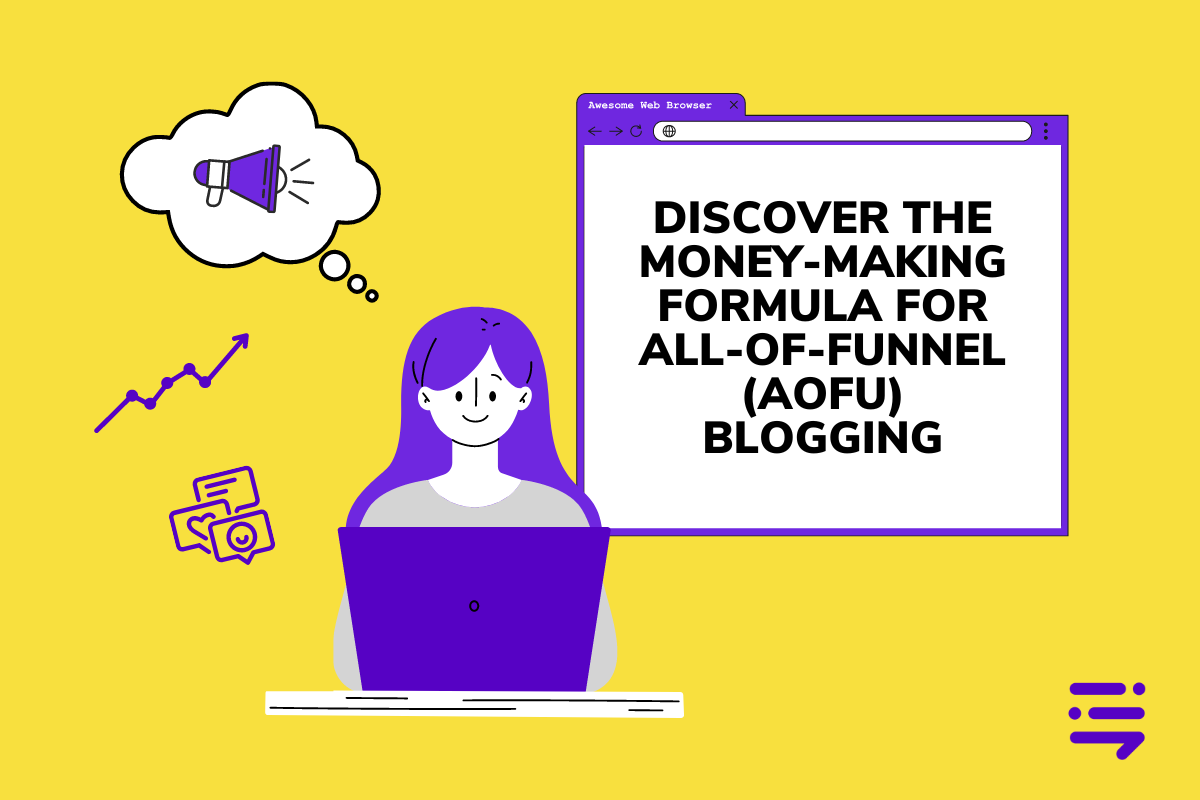
Are you still creating content separately for each stage of the sales funnel?
What if I told you that you can cover ToFu (top-of-funnel) to BoFu (bottom-of-funnel) in just one single blog post?
Let me share with you the secret to making money from All-of-Funnel (AoFu) content.
According to Ahrefs, 96.55% of content gets zero traffic from Google, and 66.31% doesn’t even get a single backlink.
How do you get into that 3.5% and create content that actually matters?
My approach to blogging is to think of all stages of the sales funnel and address every question, fear, and concern that prospects might have — answering them all from the get-go in a single blog.
This is Money-Making Blog Writing for SEO – ToFu meets BoFu – crafting award-winning, sales-earning content straight out of AI.
First, let’s look at our old approach to creating content for the sales funnel.
Table of Contents
- The Old Approach to Creating Content for the Sales Funnel vs. AoFu
- Informational Content vs. Sales Copy: Should You Choose One Over the Other?
- What is AoFu Blogging?
- To AoFu Money-Making Blogging Formula
- How to Create a Money-Making Blog Straight Out of AI
The Old Approach to Creating Content for the Sales Funnel vs. AoFu
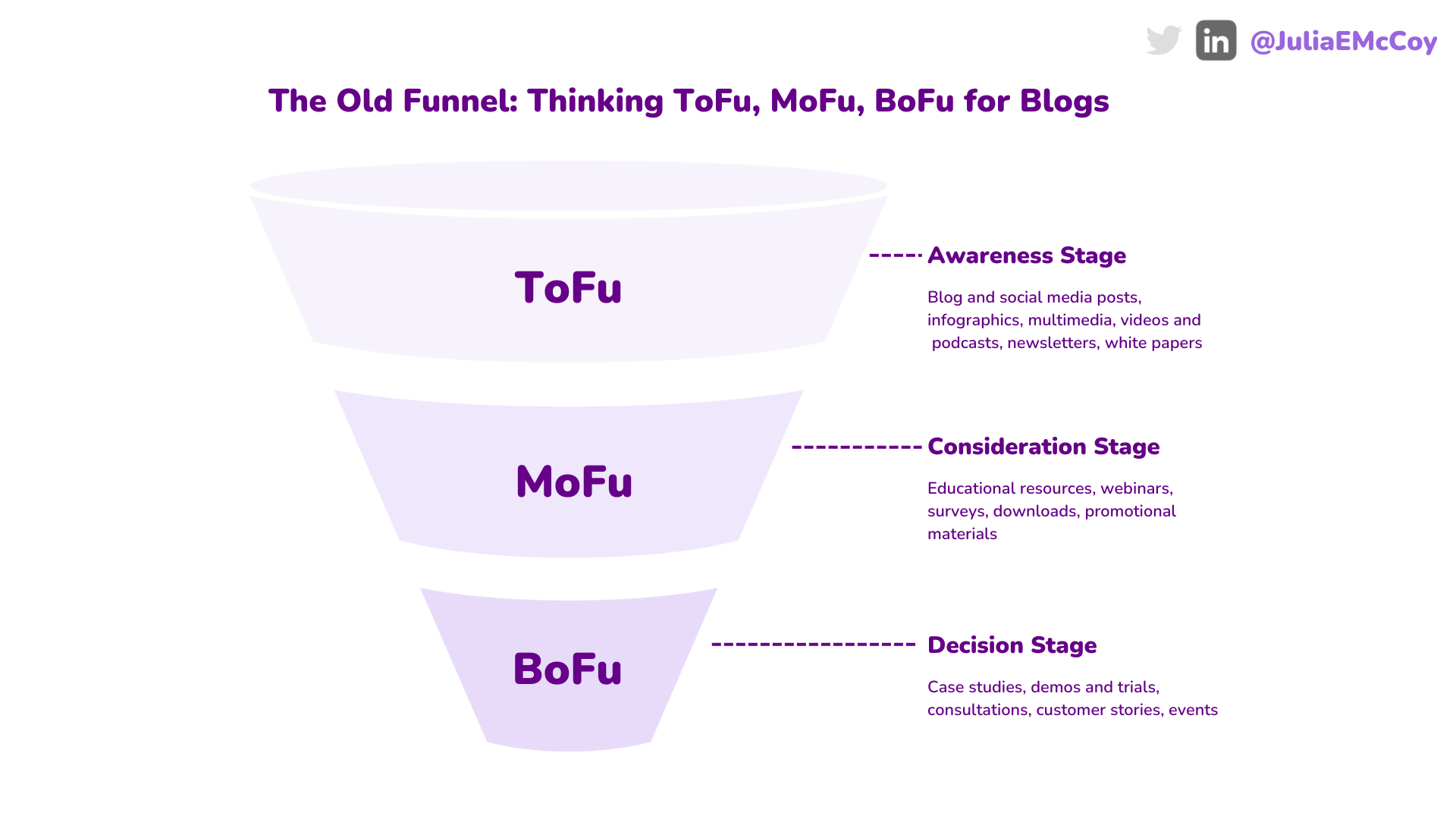
ToFu, MoFu, BoFu — we are all familiar with these acronyms. Creating content for each of these stages is what we’ve been taught for years.
Unfortunately, this approach is dying.
I’m going to teach you a whole new strategy called AoFu, or all-of-funnel, where every single piece of content addresses all the questions in all stages of the sales funnel — so you don’t have to wait weeks or even months to convert leads.
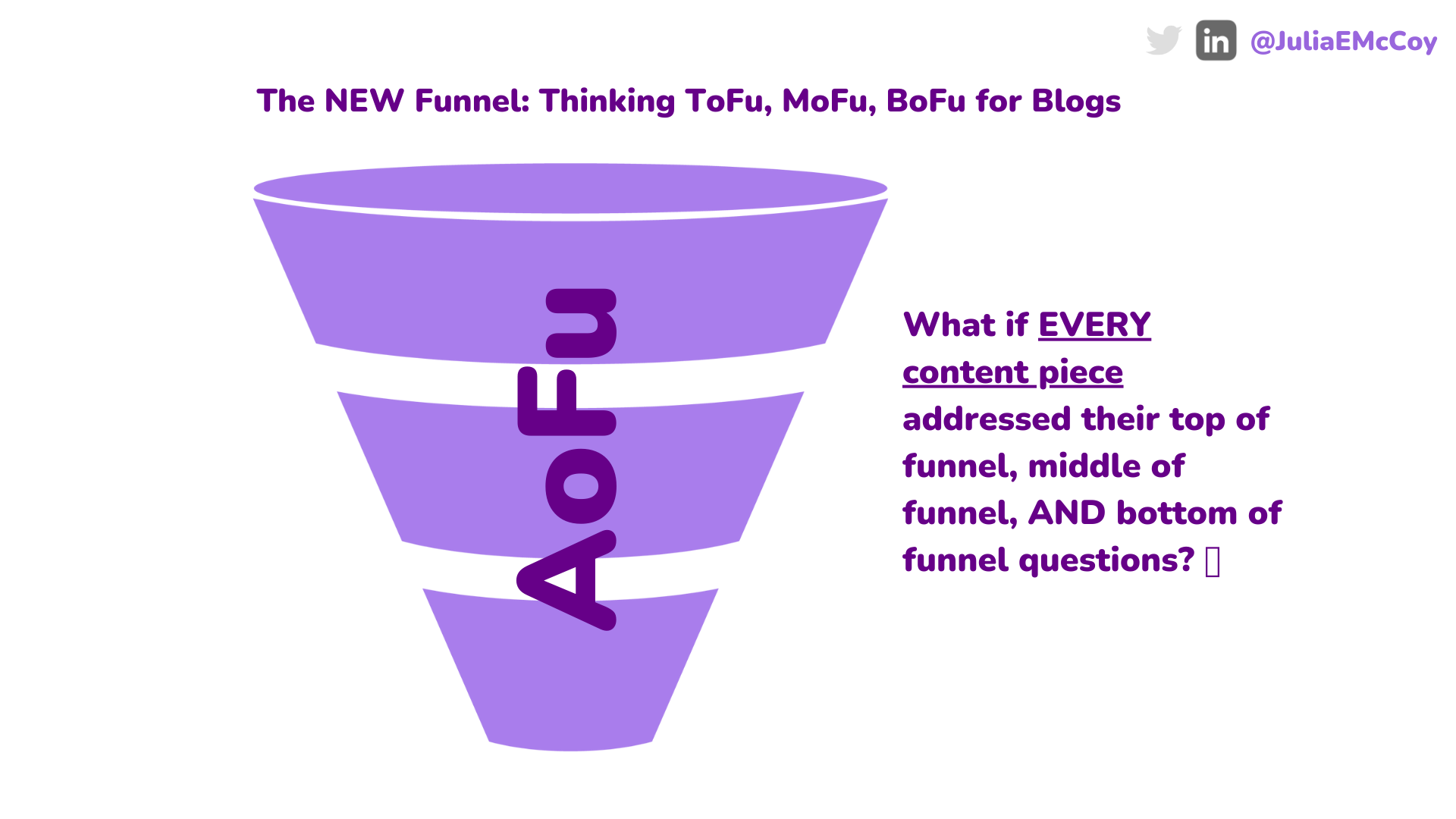
Informational Content vs. Sales Copy: Should You Choose One Over the Other?
For 10 years, I’ve studied both sciences of content writing (value-based, informative, educational ToFu) and conversion copywriting (MoFu and BoFu).
I don’t think content works unless you have some conversion copywriting tied into it. So I paid sales psychologists and the world’s best bloggers to teach me these skills.
In 2019, I had a life-changing discovery when a top SEO consultant — the same guy behind WebMD’s rise to the top of Google — taught me how to create a “sales letter” out of the concluding H2 header of my blog.
We started implementing this strategy in my agency and our clients loved it! Leads were clicking the CTA button and filling out the form after reading the sales pitch at the bottom.
I’ve since taken that up a notch and learned how to weave multiple persuasive elements into my blog that make it a ToFu-meets-BoFu piece of gold, earning me a four-figure-plus purchase (think $2,500+) from a brand new lead in a matter of days.
By combining both content and copy techniques, I was able to sell over 40,000 content projects directly to clients, with blogging as my #1 product.
I stopped looking at content as ToFu, MoFu, or BoFu types. Instead, we made sure that every content piece addressed all the questions people would have in any of those stages of the funnel.
And it is working better than ever.
Why Content + Copy Works
I don’t think content and copywriting should be separate. In fact, that could hurt your bottom line.
My AoFu approach embraces both, and I’m going to share that exact framework with you — so you don’t have to pay for an immersive 12-week copywriting course before making some serious money.
Why does this work?
In 2020, trust as we know it shifted forever. A study of 30,000+ consumers found that trust shifted away from government, media, and nonprofits over to small businesses.
This means consumers are HUNGRY.
They are HUNGRY for you to sell to them, convince them, and get them to BUY.
But a mediocre blog won’t do it!
That’s why I’m teaching persuasion techniques. And the reason they work is that we are now living in an era where consumers will decide to move forward if you address all of their concerns from the get-go.
The Power of Persuasion
One thing I learned from a sales psychology expert is that people will relate to you, love you, and buy from you — lightning fast — if you tell them what you stand against.
You read that right.
It’s not about some fancy copy or an exciting product demo.
It’s about creating controversy. Or pointing out the elephant in the room.
Railing against something is the fastest and truest way to build a tight-knit customer base.
The formula to do that?
Create a call-to-action that tells them to Stop doing X and Get Y.
This is how we end a lot of our blogs and it’s really powerful!
Make a Personal Connection with Your Brand
Anytime you can add personal branding to your CTA, it becomes even more relatable. Add a picture of the founder, the author, or another human that people will actually talk to when they reach out.
In our agency, we used to add a photo of the Client Manager to the design of the CTA so there was familiarity with that face.
In Content Hacker content, you’ll see me because I’m THE main person behind this personal brand.

If it’s a tangible product, you can add an image of the product too.
There are many ways to do this but if you put a human face out there together with a bold statement, the results are amazing.
Adding AI into the Equation
Here’s the part you’re not going to believe.
I’m doing this with AI!
BrandWell is the only tool out there that accurately writes content based on a particular keyword.
Since the initial draft is already very good, this saves me hours and hours of research, outlining, writing, and link-building.
One of the things I’ve noticed in conversion copy is that it often contains a lot of sales fluff. That’s not what we’re doing here.
This is targeted messaging that tells people how we can change their lives by increasing the profits they make from their business.
Remember, people don’t buy from the content that the AI wrote. They buy from people they trust.
And they’re going to buy in record time if you get AoFu right.
.png)
What is AoFu Blogging?
Bland old boring SEO blogs created just to drive traffic don’t work anymore. (This might have led Ryan Stewart to recommend ditching blogs altogether. 😂)
But here’s what I can tell you: Real blogs that build real trust make real money.
This came from years of studying the blog results across 40,000 projects that clients ordered from my writing agency.
We delivered over a million blogs every year, and I spent a chunk of 10 years studying blogs that actually brought in real sales, income, and subscribers. I’ve invested countless dollars to study this and get good at it.
Before you start AOFU blogging, you need to define and create your money-making pages and your freebie pages.
Next, you need to define your content style. Create a brand style guideline so that everyone in your company knows your story and what exactly it is that you do to clarify all of your marketing materials.
Identify your content differentiation factor. What makes your content worth reading?
This is also where you create buyer personas (if you don’t have any yet) and find a tone of voice that perfectly represents your brand.
Can You Use AI for AoFu Blogging?
Absolutely! You can use AI to produce AOFU content, but how you optimize it afterward will be the winning ingredient.
Just look at the transformation from AI to humanly optimized content:
.png)
Written in BrandWell, edited by a human expert.
Who Do You Need to Run Your AoFu Blogging Strategy?
You only need 2 people to make this work:
1. An SEO manager or strategist (this could be you if you have a background in SEO content/copywriting or if you’re running a low overhead business)
2. A human optimizer
The AoFu Money-Making Blogging Formula
So how do you address the pain points of your audience from ToFu to Bofu in one single blog post?
Here’s a step-by-step guide to my money-making AoFu blog formula.
Step 1: Headline & Hook
Your introduction is what will make people continue reading your piece — this is your first persuasion element. They’ll decide whether to stay on your page or leave based on the first few paragraphs of your blog post, so make sure you spend time making this look GOOD.
What makes a good intro?
Your hook should answer the question “Why should I care?”
While you’re trying to persuade your reader to take action, you should not do any hard selling here.
Your number one goal is to build trust and make a connection.
Each article written by BrandWell comes with an AI-generated headline. Sometimes it’s good enough to hook readers in, but you can always do better, so go ahead and optimize it.
Step 2: Table of Contents
Adding a table of contents is good SEO because it adds an interactive element — making the reader spend more time on your blog. It gives them a preview of what to expect from your article. They can scan it, click on a link that piques their interest, and stay on the page.
My writer used to take way too long to format this by hand. But now you don’t have to manually do this, as BrandWell automatically generates it for you in one click.
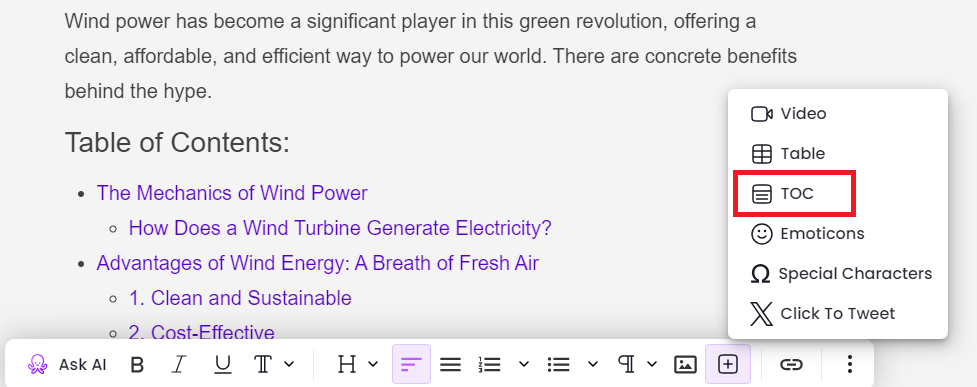
Step 3: First H2
Your first H2 is the most important point in your entire blog.
Starting your first H2 with a “What is [keyword/topic]” approach can be beneficial for several reasons:
Clarity: You’re providing a clear and concise introduction to the subject matter, setting the tone for subsequent sections and helping readers understand your main topic. Many readers appreciate a straightforward introduction so they can quickly grasp what is about to be discussed. This is your chance to pique their interest to go deeper into the content.
Perfect for beginners: When addressing a broad audience, it’s important to consider readers who may be unfamiliar with the topic. By using a “What Is [topic]” heading, you’re providing them with a foundational explanation.
SEO: Search engines often prioritize pages that clearly and accurately describe their topics. Using a “What Is [topic]” heading aligns with search queries and improves the visibility of your content in search engines.
Structure: The “What Is [topic]” approach also helps establish a consistent structure within your content, especially when you use it as the starting point for subsequent sections. It creates a logical flow, allowing readers to anticipate and follow the progression of information.
Step 4: Second H2 or H3
Practical content is key here. Add more images and examples, and link to feature pages such as your money page and freebie pages.
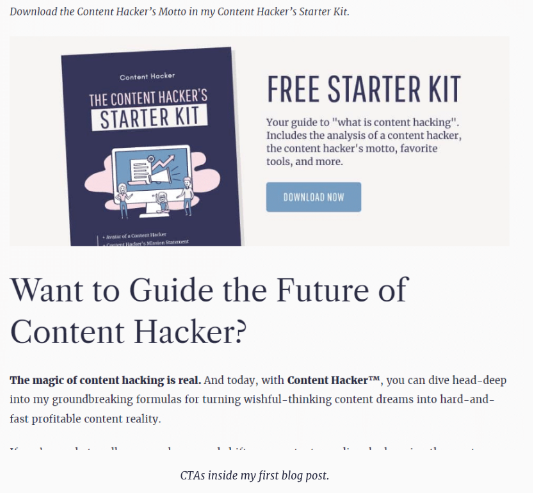
H2s and H3s help break down your content into smaller, more manageable sections. Use them to create a logical structure that organizes your ideas and facilitates easy navigation for readers.
Step 5: More H2s and H3s
This is where you break things down even more.
Each H2 should represent a significant subtopic within the broader theme of your content. It should provide a concise summary of the content that follows, giving readers a clear idea of what to expect in that section.
Make your subheadings descriptive and engaging. They should give readers a sense of what they will learn or discover in that particular section. Incorporate keywords related to the subtopic to make it easier for readers and search engines to understand the content.
Keep a consistent format and tone throughout your H2s and H3s. This helps readers establish familiarity with your content and navigate it more effectively. Consider using a similar sentence structure or length for your subheadings to maintain a cohesive style.
Ensure your H2s and H3s are clear, concise, and easy to read. Use appropriate capitalization, punctuation, and formatting to enhance readability.
What should you include in your H2s and H3s?
- Continue telling the story and flesh out your topic, leaving no stone unturned.
- Include sub-steps and offer practical advice.
- Add screenshots and links to support your content. (Internal linking is automated with BrandWell)
Step 6: Write Your First Hard-Sell
At about 3/4 down into your blog, you can add your second persuasion element. This is where you sell your product or service. In Content Hacker blogs, we tie in the sell to whatever we’re talking about right before it appears. Relevance to the topic at hand can make the segue over to your offer feel more natural, less jarring, less pushy, and less “sales-y.”

Step 7: Wrapping Up
Continue with practical tips as you wrap up your main points.

Step 8: Sales Letter Conclusion
The last H2 header is where you write your conclusion.
This is where you write a powerful Stop doing X and Get Y call to action.
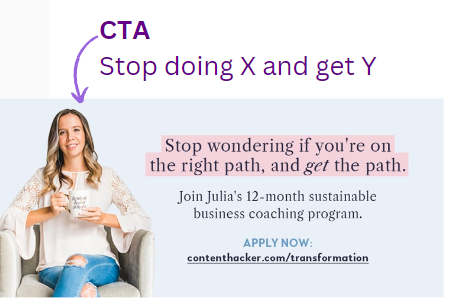
How to Create a Money-Making Blog Straight Out of AI
We don’t open up a Word doc to write our AOFU content. That is such an outdated — and time-consuming — process.
What we all do is start with BrandWell. We usually write a post from a keyword but you can also generate content from a YouTube video, a podcast episode, an existing blog post URL, and even your random thoughts written on a Doc or PDF.
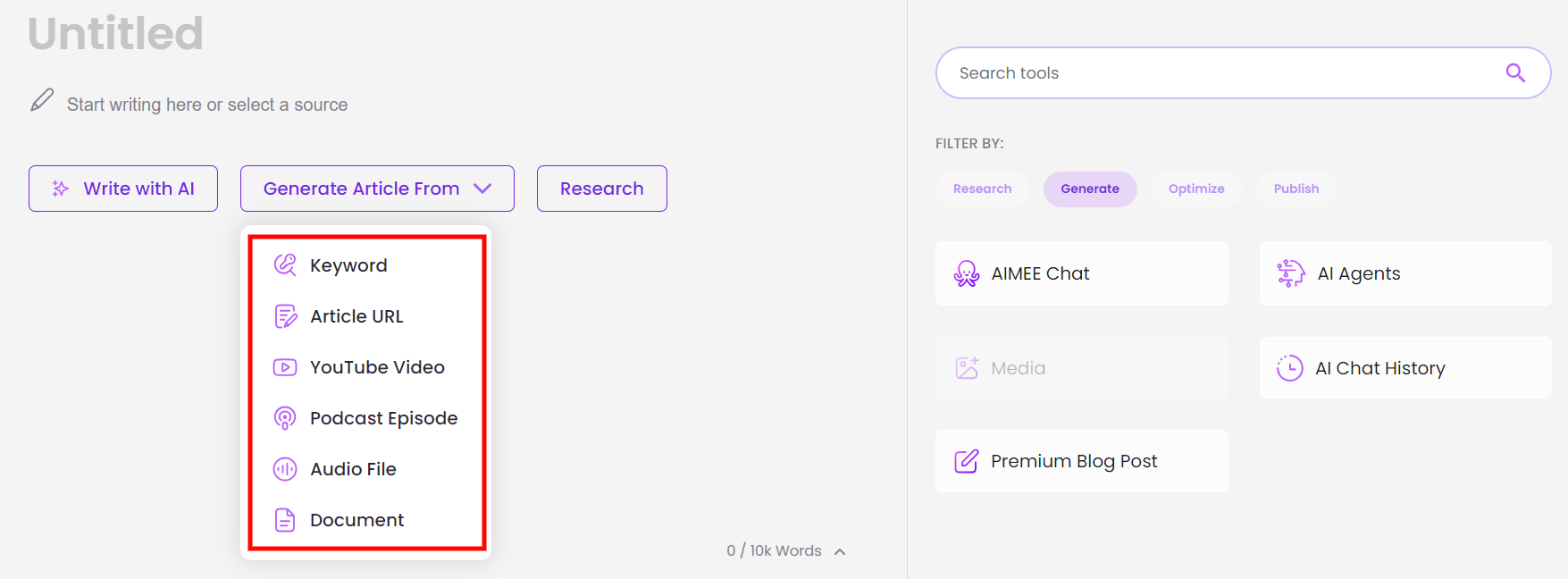
For me, generating a blog post from a keyword produces the best results.
After the AI writes your blog, then you can start optimizing it.
There are three persuasion elements in AOFU:
1. The Introduction Hook
In general, using your introduction to convince people to care enough to read your entire blog post is called hooking them. That’s why I often refer to the introduction as the “hook.”
In every blog post I write, I always open with statistics that people care about — data that will move the needle and urge people to take action. These statistics will prove that what you’re offering matters.
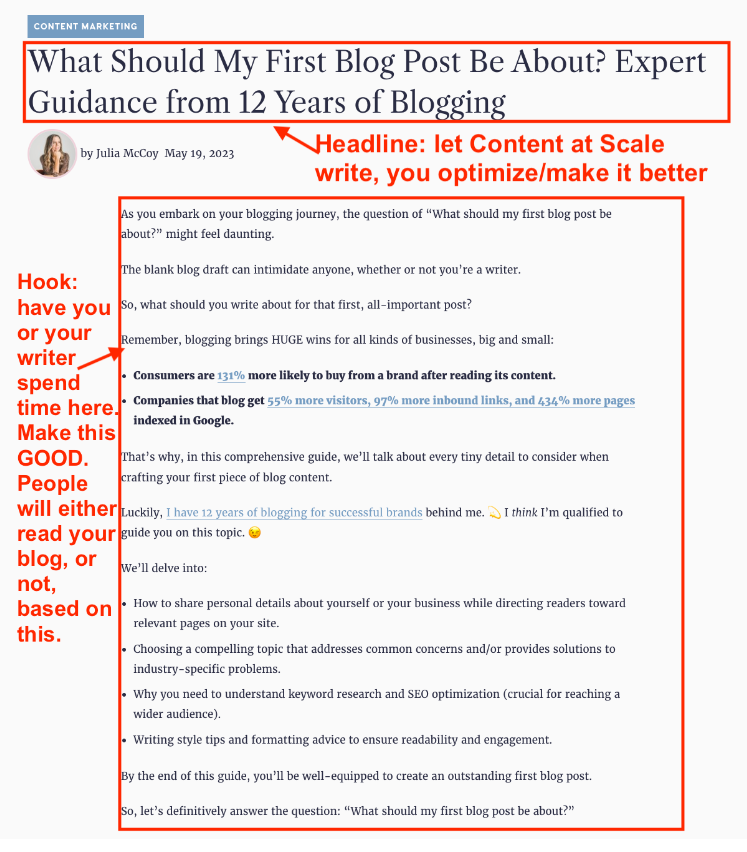
We spend a lot of time on this hook and it’s the part of the AI-generated content that we optimize the most.
No matter how good the AI is, you cannot expect a machine to write this good of a hook out of the gate because it doesn’t have persuasion abilities.
In addition to statistics, another important persuasion element is your own personal success story. What makes you different from every other talking head out there? Why should people care about what you’re saying? This is where you show off your authority, expertise, and experience to build trust.
2. The Hard Sell
The second persuasion element is the hard sell. This is your chance to talk about the product you’re selling — its features, benefits, and even pricing. Don’t forget to add a link to your sales page!
The best place to add this is around 3/4 of the way down your blog post — after you’ve built so much trust from the beginning.
After consuming so much great content, your reader is more likely to take the next step.
3. The Concluding Sales Letter
Wrap up your blog post in the conclusion H2 by highlighting the key takeaways.

Most blogs stop there.
But in my AOFU strategy, we’re adding another H2 where we say exactly what we sell and back it up with proof — talking in a sales psychology language.
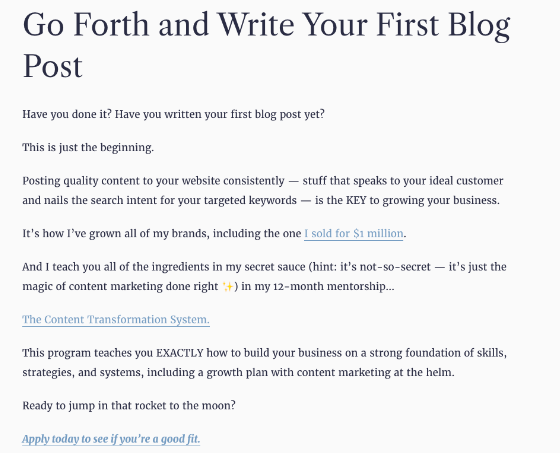
If you write using the AOFU structure more often, then creating persuasive content is going to be second nature to you.
Lastly, we always end our CTA with the Stop doing X and Get Y approach.
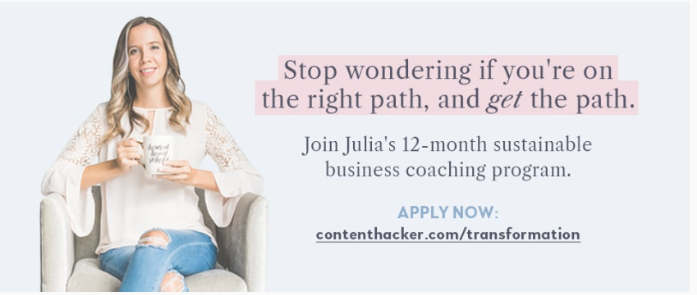
Simple. Clear. Powerful.
By the time your reader gets to your CTA, they’re more likely to take that next step than at any other point because you’ve qualified them throughout the entire piece of content.
Stop Creating Content for All Those -OFUs — Get the Money-Making AoFu Formula
Why spend days or weeks creating content for each stage of the sales funnel when you can write an amazing piece that resonates with prospects from ToFu to BoFu?
This whole new concept of all-of-funnel blogging —AoFu — will literally save you hundreds of hours of content production while getting better results.
I know because I’ve been using the same formula for 11 years (minus the acronym – I just recently put a name to this strategy 😅), driving sales for my clients even before AI arrived.
And now that BrandWell is within your reach, you can roll out this strategy with much more efficiency.

UNLOCK YOUR POTENTIAL
Long Headline that highlights Value Proposition of Lead Magnet
Grab a front row seat to our video masterclasses, interviews, case studies, tutorials, and guides.



